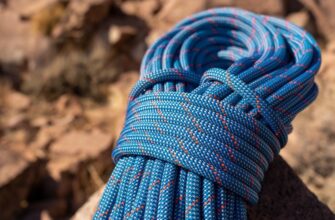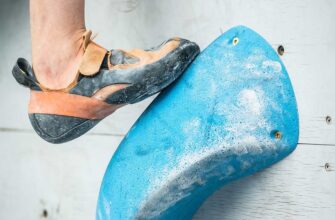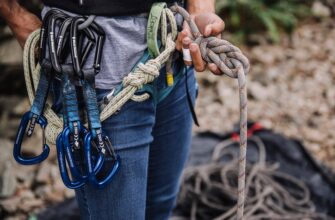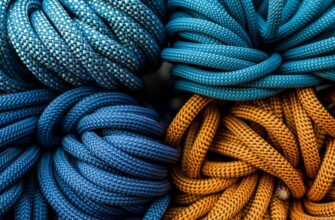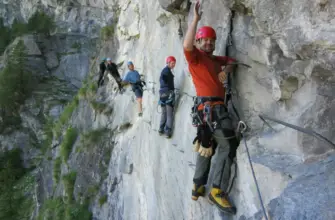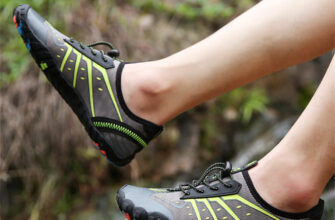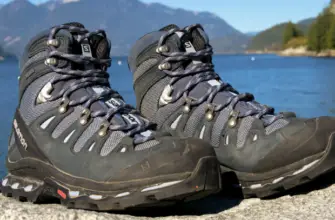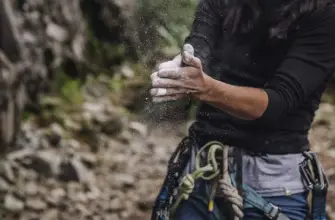In the city, when you see a person in sport’s shoes, they almost never wear socks. That’s a trend, and more and more people are going for that look. For an unknown reason, it’s en vogue. And that’s fine. But how about when you do actual sport? When you go climbing, for example? Is it safe and comfortable to go barefoot? Let’s find out.
Climbing, whether it’s crack climbing in the great outdoors or wall climbing at the local gym, is absolutely thrilling, but still dangerous. When you take up such a sport, you must be aware of the hazards and do your best to minimize the risk and stay in control. One of the most critical parts of climbing gear is specialized climbing shoes.
Your feet get the hardest job, so you need to provide them with the best footwear. And take a decision if you need to wear socks with climbing shoes.
If you do, then next decide if you will wear thin socks or thicker ones. All these issues seem rather trivial, but they are not. Everything becomes crucial on the mountain. Every little detail can stand between you and potential danger.
And therefore, you will find all the information you need in our article below. Let’s start.

- Do you wear socks with climbing shoes? When did they go bare?
- Benefits and drawbacks of wearing socks
- Benefits
- More comfortable
- Less smelly and sweaty
- Warmer
- Easier to take off
- Less slippery
- Drawbacks
- Less sensitive
- Can be more slippery
- Different socks — different fit
- Which socks to wear?
- To recap
- Can you try on climbing shoes without socks?
- Should your toes be curled in climbing shoes?
- Do you wear socks with athletic shoes?
Do you wear socks with climbing shoes? When did they go bare?
Climbers of the past wore socks. They also wore heavy hiking boots with attached nails. And very thick wool socks to prevent chafing and blisters, as those were such aggressive shoes.
Then came the 1970-s and the climbing boom. Everyone wanted to conquer the heights. So the sportswear manufacturers started to produce new models of rock climbing shoes, and develop new materials to make climbing easier. Those materials were lighter, they hugged the foot tighter, and didn’t cause blisters.
By 1990-s some climbers wearing socks started skipping them and going barefoot, wearing just their climbing shoes.
Now we can say that around 95% of the climbers don’t wear socks during a climbing session.
So do you wear socks with climbing shoes? — Many climbers don’t.
But we don’t advise you to just follow their steps. Be your own judge and make the best decision for yourself. Read further and weigh up all the benefits and drawbacks of wearing socks vs. not wearing socks.
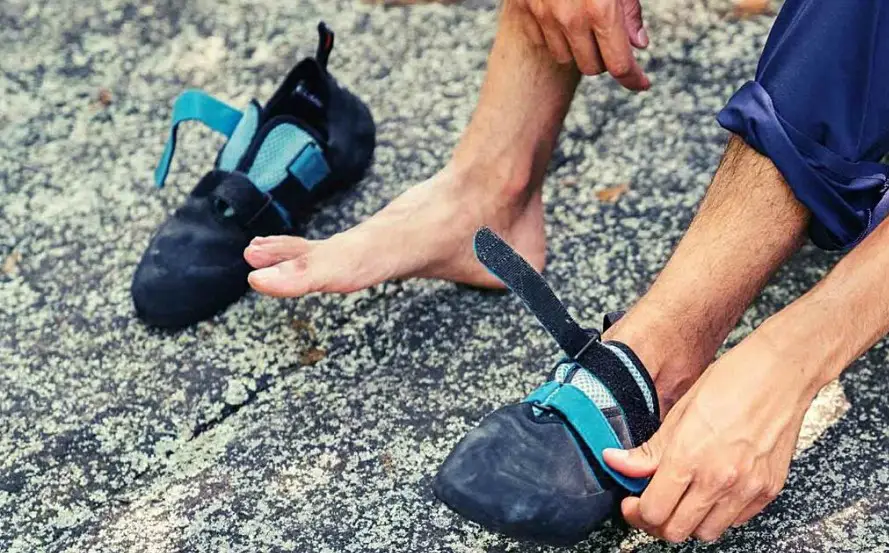
Benefits and drawbacks of wearing socks
Benefits
More comfortable
Socks can make you feel more comfortable in your climbing shoes. There could be some seams on the inside of the shoe that will rub your foot after a while. A thin pair of socks can save you from that. Socks decrease friction and protect the feet.
If you are trying to break in new climbing shoes, you will feel much better wearing socks. Otherwise, you can end up with uncomfortable rubbing, hot spots, blisters, and calluses.
Even with your dress shoes, you need some time to adjust and get comfortable. With climbing shoes, it can become vitally important.
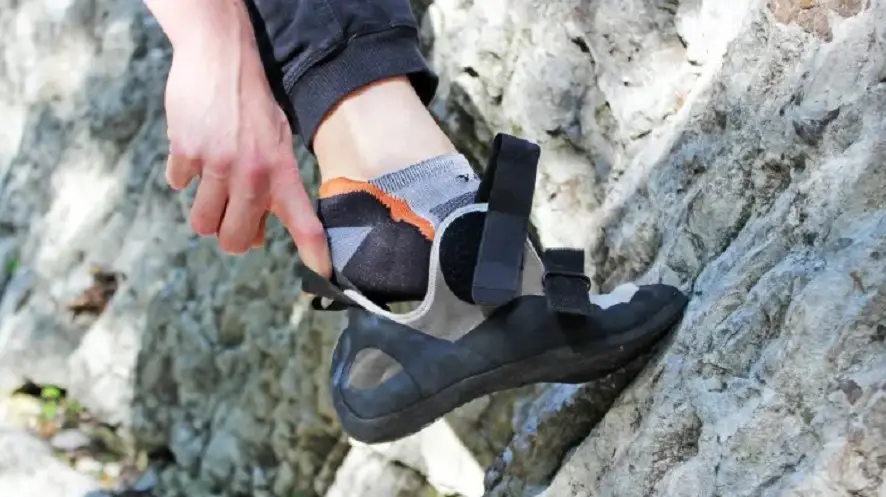
Less smelly and sweaty
Rock climbing (or gym climbing) is a vigorous exercise. And it makes you sweat. A lot. Our climbing shoes obviously absorb the smell. With time, the stink gets really gross.
Even with all the modern means for deodorizing the footwear, the odor will be harder and harder to get rid of. Climbing socks will absorb much of the sweat, then you’ll throw them in the washing machine and voilà — the climbing shoes are fresh and dry.
Besides the stink, sweat is a favorable environment for fungal or bacterial diseases. If you walk with your bare feet in the gym or wear rental shoes, you are vulnerable and in danger of catching some unpleasant infection. A thin pair of socks will protect you in such a case.
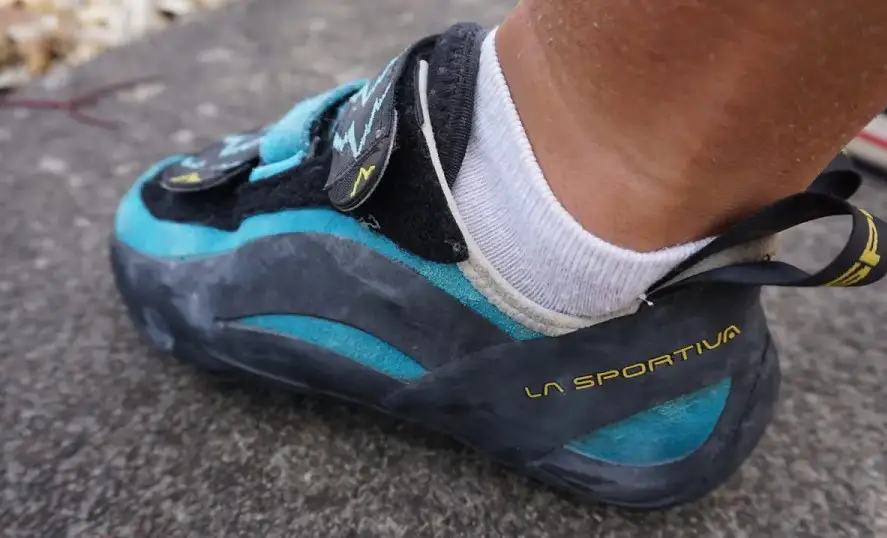
Warmer
If you climb in colder weather, you need to keep your feet warm. That can be the reason to wear socks, even for climbers who never do it otherwise. So, in such a case, you wear a thick pair to prevent your toes from getting numb.
Cold toes lose sensitivity, and it’s dangerous because you are losing a close connection to the rock and may miss an unstable stone or something else. Wearing socks can literally save your life.
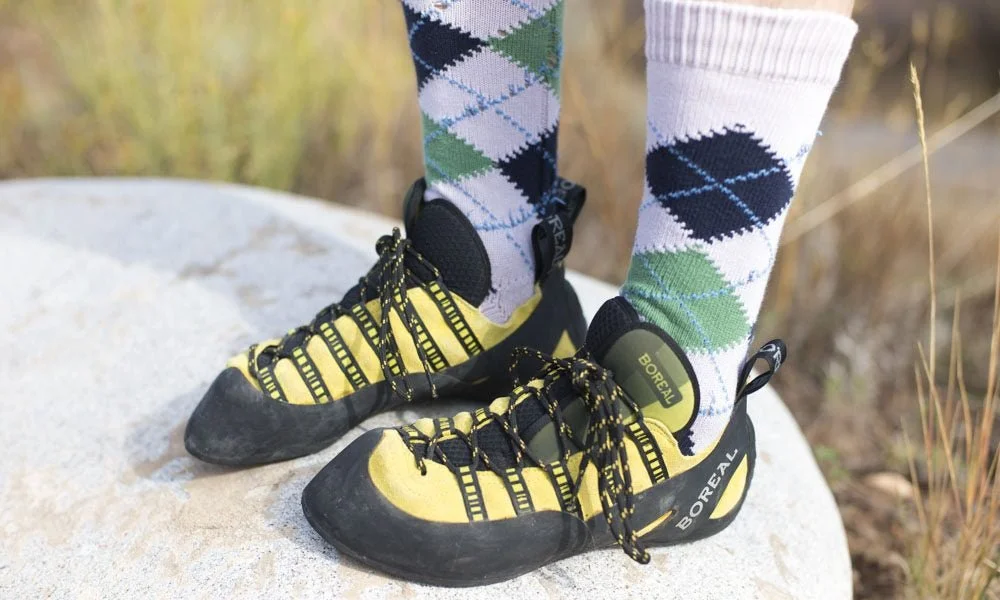
Easier to take off
During the climb, our feet get a little swollen and very sweaty. So taking off the climbing shoes becomes problematic.
If you don’t wear socks, your sweaty and puffy feet will not get out of the climbing shoes easily.
But if you wear socks, the process will be much faster. The sock will stick either to the shoe or to the foot and will make it easier to slide out.
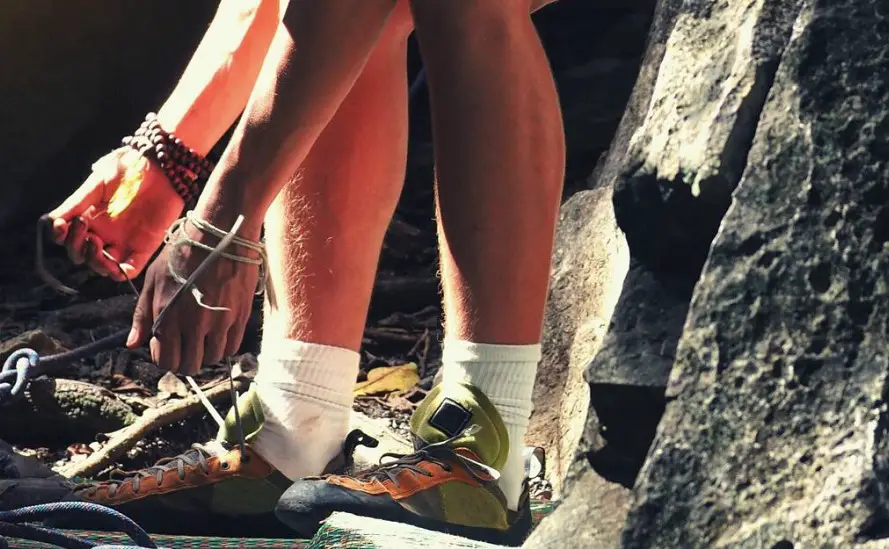
Less slippery
We already talked about sweat and the problems it causes. There’s one more: if you don’t wear socks and your feet get sweaty, they will get slippery too. You will feel it inside the climbing shoe, and that will make doing heel hooks more problematic.
Unless your climbing shoe fits you like a glove, such a situation is very likely to happen.
If you wear socks with climbing shoes, they won’t allow the sweat to get outside and provide a tighter fit for your rock climbing shoes.
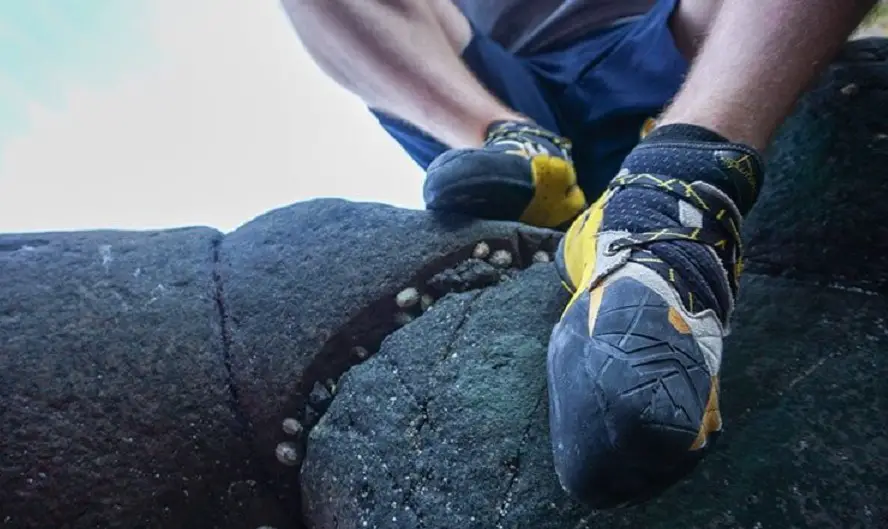
Drawbacks
When you ask an experienced climber: “Do you wear socks with climbing shoes?” — They often answer: “No”. But why?
Maybe the next part of our article will help answer that question.
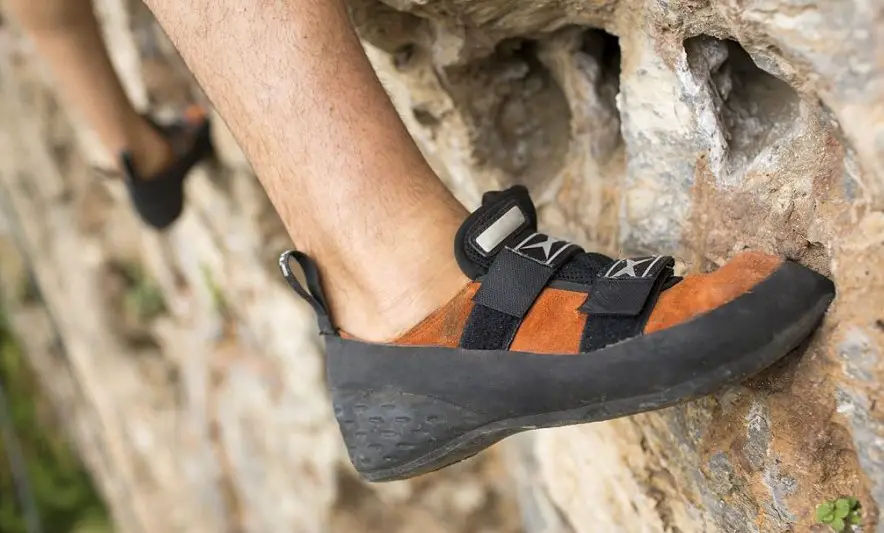
Less sensitive
Climbing shoes are supposed to be snug and fit your feet like gloves. Not to the level of discomfort, of course. But the goal here is to let you ‘feel’ your path on the rock or a climbing wall.
If you wear socks with climbing shoes, you add an extra layer between the foot and the rock. A lot of experienced climbers don’t wear socks exactly for that reason.
The connection to the rock is more important for them.
However, wearing climbing shoes with very thin socks won’t make a great impact on your sensitivity level.
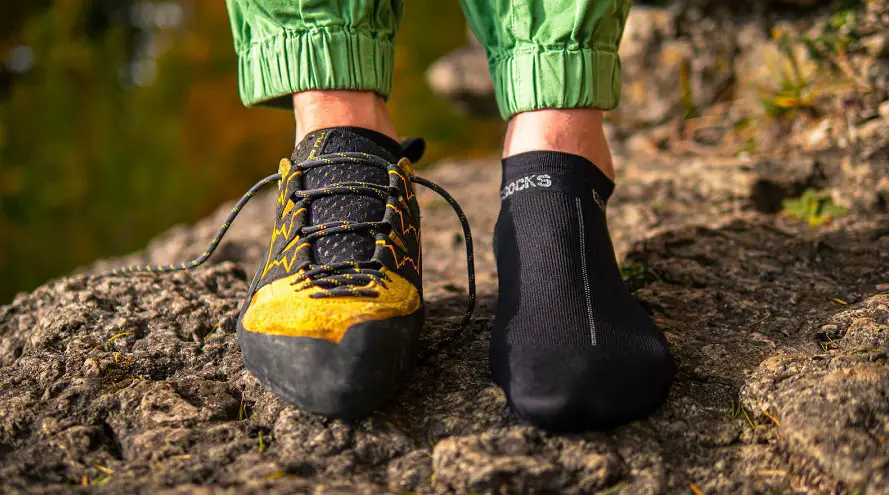
Can be more slippery
It may seem like a contradiction with one of the benefits we mentioned, but it’s not.
Wearing socks can cause your feet to slip inside the climbing shoes as well. If you have slightly larger shoes and tend to sweat a lot, slipping can cause problems and make the climb more complex. Sliding from a heel hook can be hazardous.
As you can see, wearing socks can be both a benefit and a drawback. The best solution — try to find climbing shoes the fit as tight as possible (but not too tight) and check both options: wearing socks and not wearing socks. It’s critical to feel safe and in control of the situation.
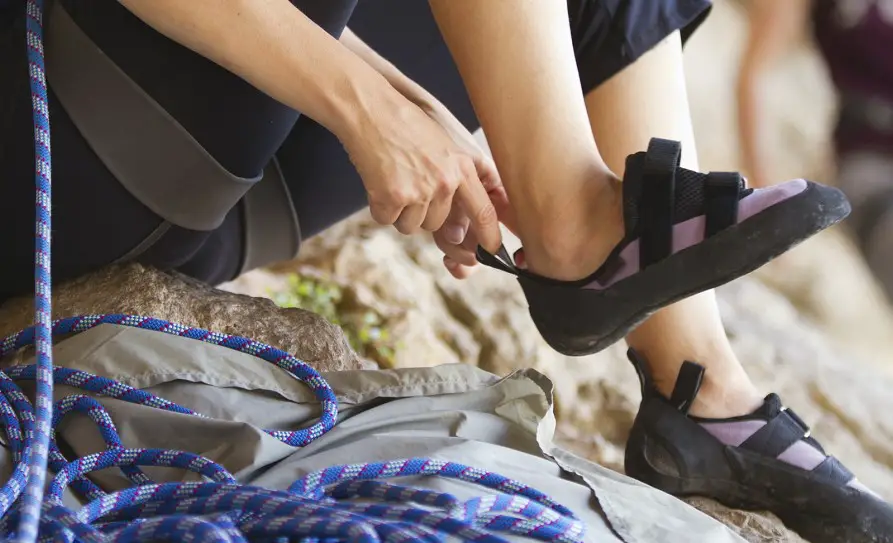
Different socks — different fit
If you wear socks with climbing shoes, you’ve noticed that different socks fit differently. Of course. They can be thicker socks or thinner, larger or smaller. The cut can also vary… All that you will feel. When climbers wear socks, they usually go for one or two models for the same climbing shoes. They choose the right ones by trial and error.
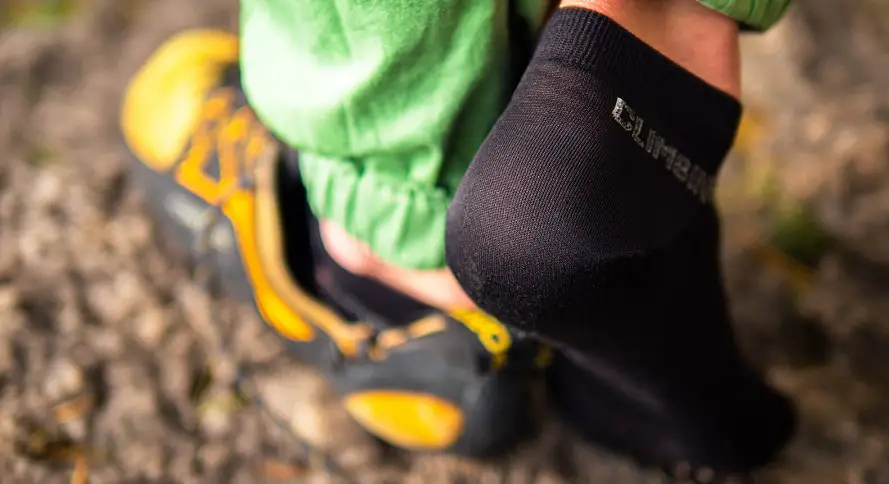
Which socks to wear?
Now, that we covered the pros and cons of wearing socks with climbing shoes, we simply must tell you about the best socks to wear. If the question: do you wear socks with climbing shoes? You answered with yes, go on reading.
It’s always a good idea to entrust your comfort and safety to professionals. That’s why companies providing gear for outdoor activities are on our top list.
Like La Sportiva, which has been producing footwear for climbing, mountaineering, skills, and mountain running since 1928. You can’t be more experienced and reliable than after a hundred years’ worth of five-star reviews. If you choose to wear climbing socks on your crack climbing adventure, this brand shouldn’t disappoint.
They make top-quality climbing shoes and climbing socks as well. The socks offer toe to heel protection, and right and left foot cuts, and they are made of innovative breathable, and high-resistance fabric with an anti-bacterial coating.
If you are in need of thick socks, watch out for Darn Tough. They offer an excellent selection of merino wool options, as well as microfiber. The company makes all kinds of socks for outdoor activities like camping and hiking. These socks will keep you warm on high altitudes and in cold climates.
Another type of socks to check out — is compression socks. They will be perfect if you are hunting for an ideal fit. They will never let your feet chafe and will prevent blisters. Compression socks are not the most common among the climbers, but they are worth checking out too.
Powerlix and Double Couple are two brands that earned a great reputation for the performance and durability of their products. High-quality breathable materials support recovery from swelling, fatigue, blood clots, and other injuries. If you wear climbing shoes with such socks, you will be very well protected.
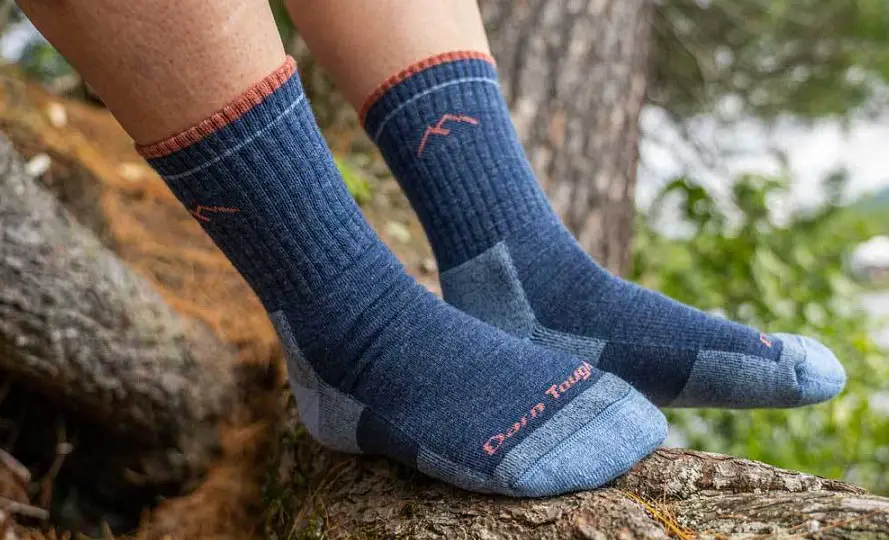
To recap
So what’s the answer to a question: do you wear socks with climbing shoes? — The answer is: it’s up to you.
Before going crack climbing, weigh up all the pros and cons we’ve provided, then try it out both ways and finally decide the best option for you.
In the end, it comes to personal preferences and maybe some physical peculiarities.
The main thing is: whether you choose to wear socks with climbing shoes or not, it should enhance your enjoyable experience and not destroy it.
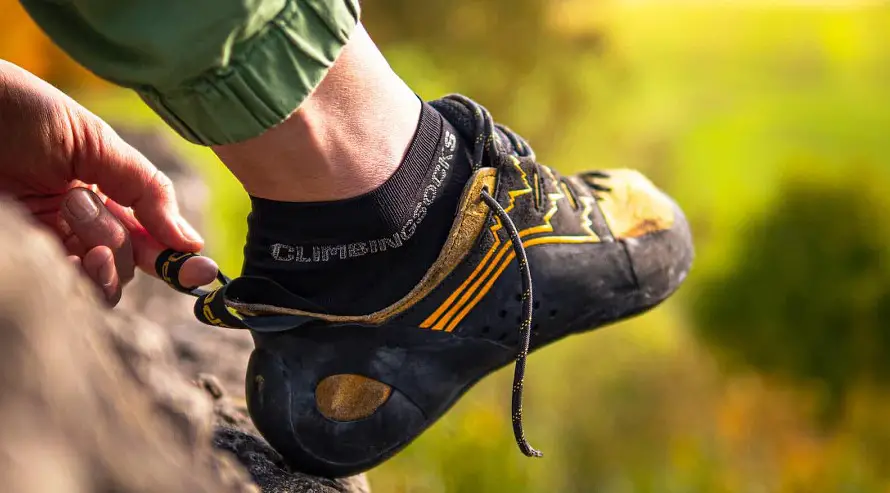
Can you try on climbing shoes without socks?
You can try wearing climbing shoes without socks, but make sure that:
- Your shoes are a perfect fit for the feet, not loose, not too tight.
- They are your own pair. If you wear rental shoes, you don’t want your bare feet in direct contact with the inside material.
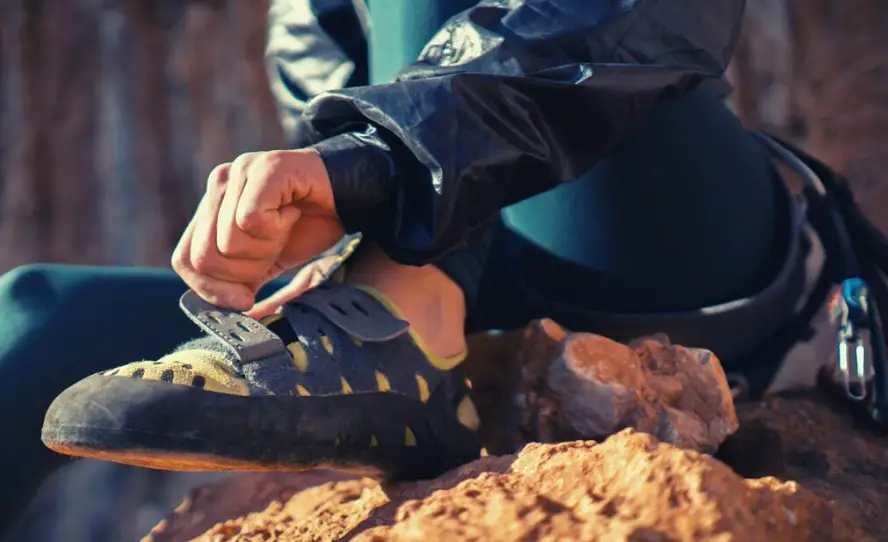
Should your toes be curled in climbing shoes?
When you wear climbing shoes, your toes are not completely flat. The reason is simple: curled toes are stronger and grip better (remember the monkeys climbing the trees?). But don’t overdo it. You shouldn’t feel any discomfort. A climbing shoe is tight, but not painful on the toe.
Do you wear socks with athletic shoes?
It’s up to you whether to wear socks with athletic shoes or not. There are no strict rules. However, if your shoe is not tight enough, we recommend wearing socks. They will prevent your foot from getting too sweaty and slippery and in cold climates will keep the toes warm. And we will always recommend wearing a sock with a rental shoe.



